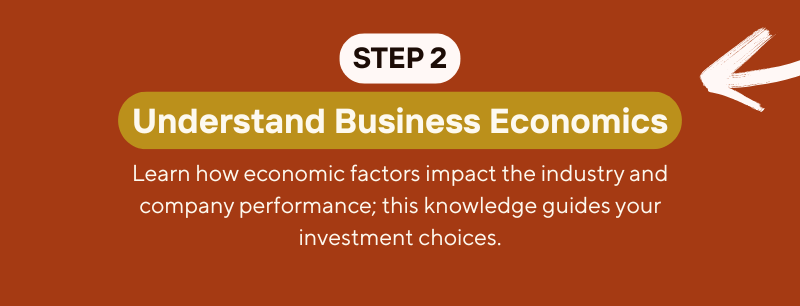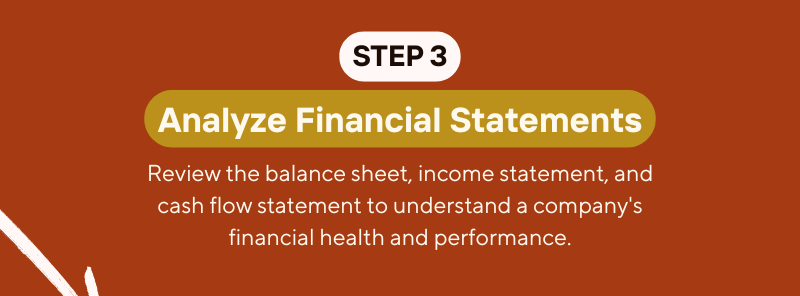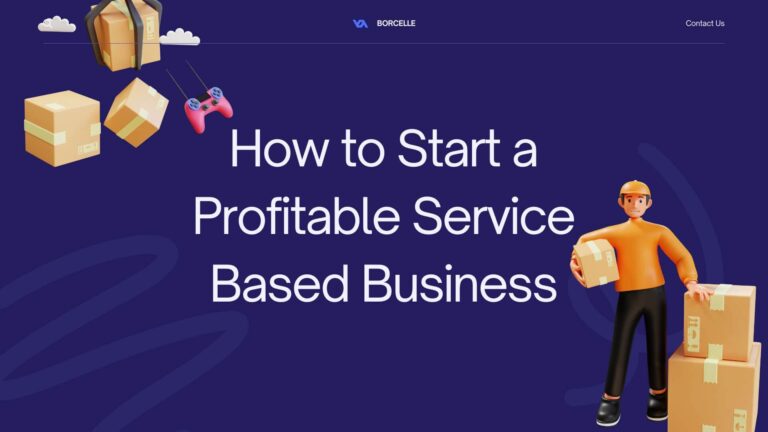How to Evaluate Stocks as a Beginner: A 6-Step Checklist I Wish I Had When I Started
Last week, my friend Noah texted me wanting to know what to look for when it came to investing in stocks. I thoughtlessly replied and sent him to a stock screener website where he could look up the vital stats of any company. He replied, “Dude, there are 72 metrics on the screen alone. This is overwhelming.”
And I realized that he was right.
When you’re looking up stocks online, you’re inundated with too much information. So I messaged him, “Don’t worry, I got you, man.” This blog post is the result of that conversation and it’s the post I wish I had before I started investing.
Why You Need a Stock Evaluation Checklist
When it comes to evaluating stocks, there’s a six-step checklist I like to go through with every single stock before I even think about investing money into it.
If you’re a beginner, this checklist is crucial, it gives you the highest likelihood of choosing a stock that returns money in the long run. As long-term investors, we want to be investing in companies with proven track records.
Step 1: Stick to Businesses You Know

The best strategy for beginners is simple:
“Never invest in a business that you don’t understand.” – Warren Buffett
In a world with thousands of stocks, you’re more likely to do well if you pick one that:
- You intimately understand
- Offers products or services you already use
Example:
Almost everyone owns at least one Apple device. If you choose to invest in Apple, you’re more likely to research and understand the company better.
Step 2: Understand the Business Economics

Buffett’s favorite analogy is: “How would you go about buying a farm?”
You’d probably:
- Look at how many acres it has
- Consider what kind of crops you can grow
- Review expected revenue per acre
- Look at operating costs
- Examine the free cash flow
When you’re buying a farm, you’re buying a piece of a business. The same mindset applies to stocks.
We want to buy solid companies with good business models.
Here’s what Buffett says about monitoring investments:
“If you have to closely follow a company, you shouldn’t have bought it in the first place.”
Step 3: Analyze the Financials – The Holy Trinity

We can evaluate a company’s financial health through three key financial statements:
- Balance Sheet
- Income Statement
- Cash Flow Statement
This is called fundamental analysis. It gives you a full picture of the company’s financial situation.
We won’t be covering technical analysis here—that’s more for short-term traders using charts and patterns.
Where to Find Financial Data
- SEC.gov: Use the EDGAR search feature for annual/quarterly reports
- Yahoo Finance: Easier for beginners—search a company (e.g., Apple), then click “Financials”
📊 Balance Sheet: Assets vs. Liabilities
What to look for:
- Cash Position: Go to current assets → “Cash and cash equivalents”
- Apple: $62.639 billion
- Debt: Go to total liabilities → current liabilities → “Current debt”
- Apple: $15.613 billion in current debt, $109 billion in long-term debt
Takeaway:
Apple has more than enough cash to cover its short-term debt, and its long-term liabilities aren’t a major issue.
💡 Liquidity Check: Current Ratio
Formula:Current Assets ÷ Current Liabilities
- Apple’s current ratio is 1.07
- A ratio above 1 is generally a good sign
📈 Income Statement: Revenue and Profits
This shows how the company did in the past quarter and trailing 12 months.
- Apple’s total revenue (Q ending 6/30): $82.95 billion
- Net income: $19.442 billion
- Net profit margin ≈ 23%
A net profit margin above 20% is strong. Over 10% is still respectable.
Compare this to:
- Lucid Motors: A growth company with no profits (yet), making it harder to evaluate.
Some investors speculate on future profitability.
Amazon, for example, lost money for years (lost $719 million in 1999) before turning a profit.
💵 Cash Flow Statement: The Money Flow
This statement shows:
- How much money is coming in vs. going out
- Whether free cash flow is growing year over year
Free cash flow can be used for:
- Paying down debt
- Dividends
- Share buybacks
Companies with strong, growing free cash flow usually have solid long-term prospects.
Step 4: Key Financial Ratios

After reviewing the big three statements, look at these two metrics:
🧮 Price-to-Earnings (P/E) Ratio
Formula:Current share price ÷ Earnings per share
- Tells you how much you’re paying per $1 of earnings
- Example: A P/E of 20 = Paying $20 per $1 of earnings
Important: Compare P/E:
- To other companies in the same industry
- To the company’s historical average
Tech stocks typically have higher P/E ratios than consumer staples.
💲 Price-to-Sales (P/S) Ratio
Use this when a company isn’t profitable yet.
Formula:Current share price ÷ Sales per share
A lower P/S compared to competitors may signal undervaluation.
Step 5: Research the Management Team

You can learn about leadership by:
- Reading earnings call transcripts and annual reports
- Reviewing LinkedIn profiles
- Looking into the Board of Directors
A long-tenured CEO often signals strong leadership and in-depth company knowledge.
Major leadership changes can impact stock prices due to changing expectations.
Step 6: Does the Company Have a Competitive Advantage?
A competitive advantage increases the odds of long-term success.
Examples:
- AbbVie owns exclusive patents for Humira
- Coca-Cola has strong brand power
- Tesla, under Elon Musk, stands out for innovation
These are the kinds of companies that are harder for competitors to dethrone.
Bonus Tip: Diversify Your Portfolio
As a beginner, it’s crucial to diversify your investments:
Don’t go all in on one stock. If it tanks, you lose everything.
Instead:
- Own 10–50+ different stocks
- Or invest in a market index fund
Index funds offer:
- Exposure to a wide range of companies
- Lower risk than individual stocks
- Long-term performance that often beats professional fund managers
Index fund investing is one of Warren Buffett’s top recommendations.
In a nutshell
I hope this post helped you gain some valuable insights into how to invest in stocks. Always aim to:
- Understand the business
- Review its financials
- Evaluate its leadership and long-term potential
Thanks for reading!
Have questions? Drop them in the comments, I’ll do my best to respond.
See you in the next one. ✌️







